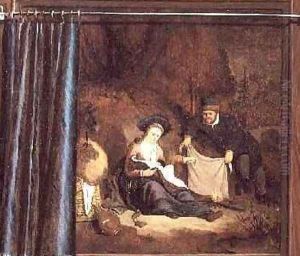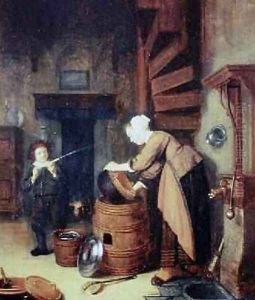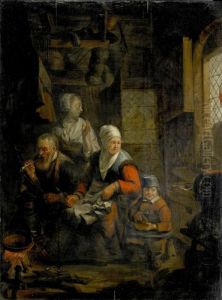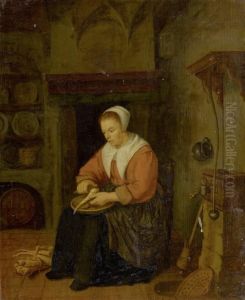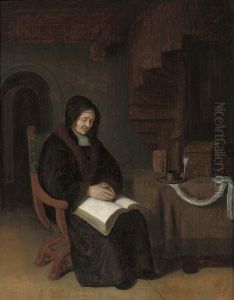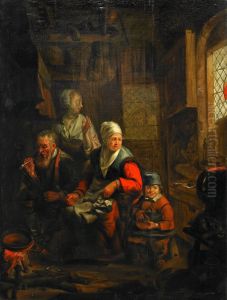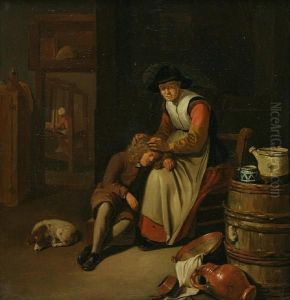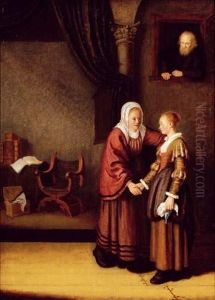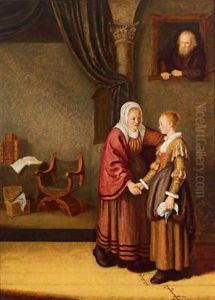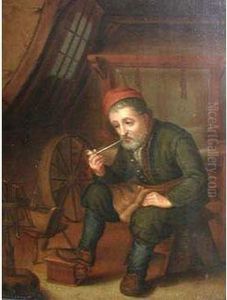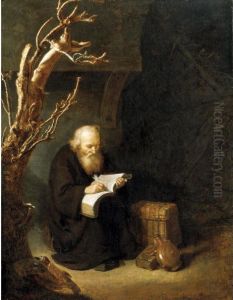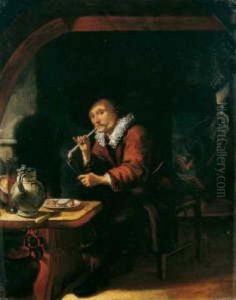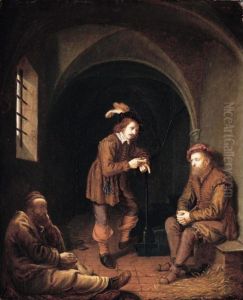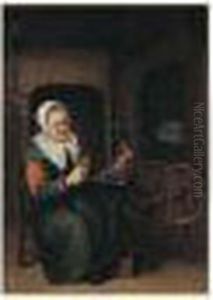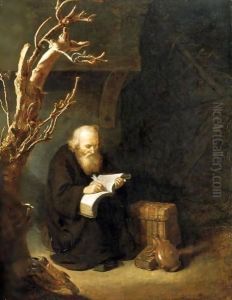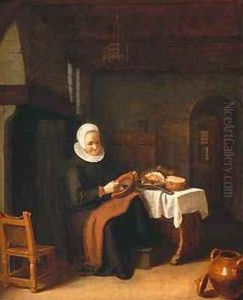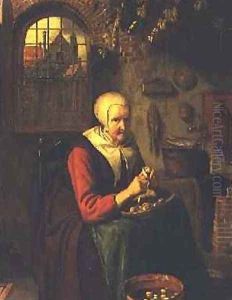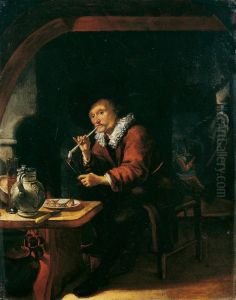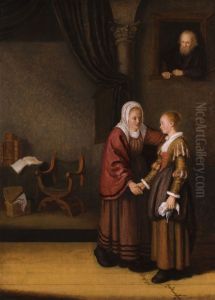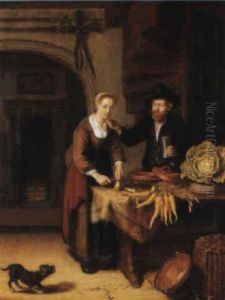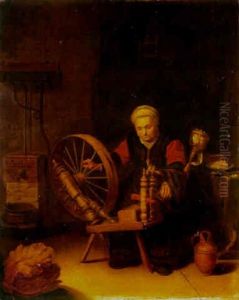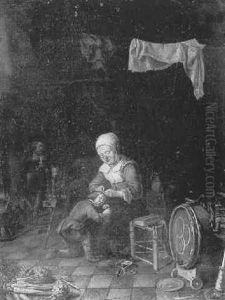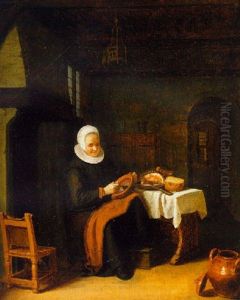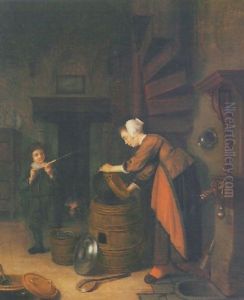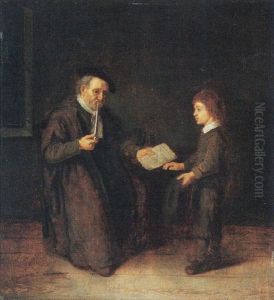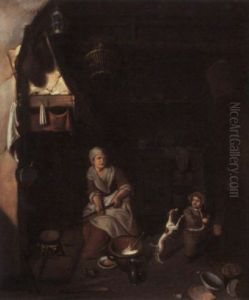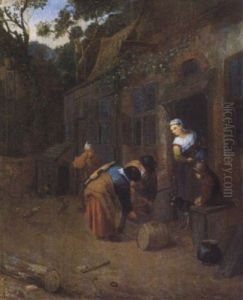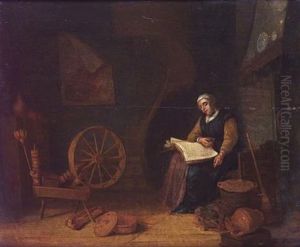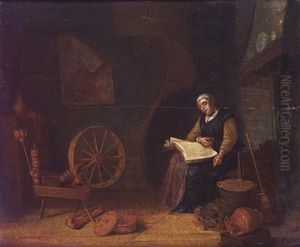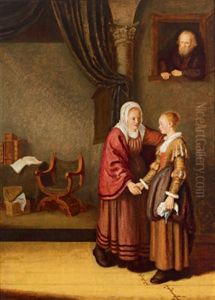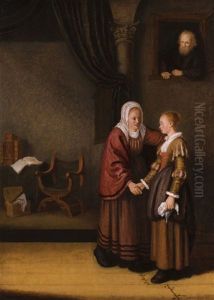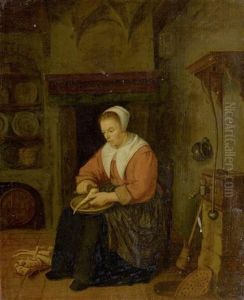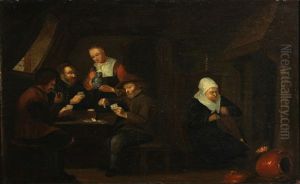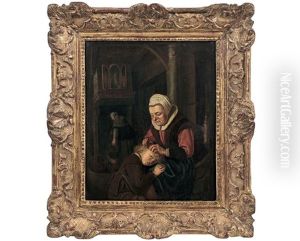Abraham de Pape Paintings
Abraham de Pape was a Dutch Golden Age painter, known for his detailed and atmospheric interior scenes. Born in Leiden in 1620, de Pape was part of a vibrant artistic community in the Netherlands during a period known for its significant contributions to art, particularly in genres such as still life, portraiture, and genre painting. Although not as widely recognized as some of his contemporaries, de Pape's works offer a unique glimpse into the domestic and public lives of 17th-century Dutch society.
De Pape received his artistic training in Leiden, a city that was home to a number of prominent artists of the time, including Rembrandt van Rijn. While there is little detailed documentation of his training, it is believed that de Pape was influenced by the Leiden School, which was known for its fine attention to detail, use of light and shadow, and intimate domestic scenes. His works often depicted interior scenes with one or two figures, engaging in everyday activities. These paintings are characterized by their meticulous detail, carefully rendered textures, and the warm, soft lighting that bathes the subjects.
Despite his talent, Abraham de Pape did not achieve the same level of fame as some of his contemporaries. His career was relatively short-lived; he died in 1666 at the age of 46. Nevertheless, his contributions to Dutch Golden Age painting are significant, providing insight into the culture and lifestyle of the period. His works are held in collections both in the Netherlands and internationally, appreciated for their quiet beauty and historical value.
Throughout his career, Abraham de Pape remained relatively obscure, and as a result, details about his personal life and career are scarce. However, his surviving works continue to be studied and admired for their contribution to the rich tapestry of Dutch Golden Age art. They serve as a testament to the skill and sensibilities of an artist who, despite his lack of widespread recognition, played a role in shaping the visual culture of his time.
